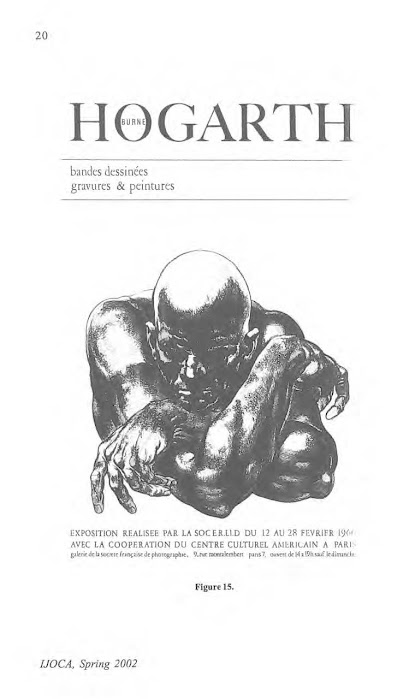by Lucio Luiz
Quadrinhopédia is an independent database dedicated to publishing biographies of artists, writers, editors, journalists, researchers, comic shop owners, curators of events, and other professionals who are involved in Brazilian comics. Its name refers to the term “Quadrinhos,” which means comics in Brazilian Portuguese. Each entry is linked to a classification, or Terminologia, so one can search for all editors, for example.
The site debuted on May 10, 2023 with 850 entries, but with the intention of adding new bios and expanding existing ones. The main inspiration was the Dutch Lambiek Comiclopedia.However, I’ve chosen to order alphabetically by given name is because, culturally, in Brazil, it is more common for people to call each other, even famous people, this way (when someone will look for Mauricio de Sousa, for example, rarely will look for "Sousa, Mauricio de" unless it's an academic work). I know that the formally correct practice is to alphabetize using surname, but I pondered what would be easier for Brazilian readers in general and I took some other Brazilian cultural encyclopedias’ practices as a model. However, I’m planning an Anglophone page with a list by family name parallel to the main list as a cross-reference.
The site also features Brazilian artists who work with American comics, such as Mike Deodato (one of the first Brazilian to became famous in US in the 1990s, and whose father Deodato Borges was one of the great names in Brazilian comics), Ed Benes, Adriana Melo, Ivan Reis, Rafael Albuquerque, Rod Reis, Gabriel Bá, Fábio Moon, Cris Peter, and several others -- there are a lot of Brazilians working in North American comics.
And the opposite is also true, with the inclusion of artists who were born in other countries, but developed a large part of their career in Brazil, such as André LeBlanc (Haitian), Eugenio Colonnese (Italian), Rodolfo Zalla (Argentine), Jayme Cortez (Portuguese) and Malika Dahil (Moroccan), to name just a few.
The information comes from several sources: books, websites, newspapers, interviews and, in several cases, asking the artists directly. One thing about the Brazilian comics community is that, in general, there is great support and contact between artists, even between the "big" and "small" ones (for lack of a better expression).
I've been a Wikipedia editor since 2005 and have written more than a thousand articles related to Brazilian comics on the Portuguese Wikipedia (and a few also on the English and French Wikipedias). In Wikipedia, there is a (necessary) rigidity regarding the sources. However, many artists have sources that I know are reliable, but not according to Wikipedia's rules, so with Quadrinhopédia I have a little more "freedom" (but without giving up accuracy in research, which is something I take very seriously).
I'm the only person working on the site. The first 850 entries from the "debut," I have developed over the last four years in my spare time. But less than a week after the site launched, several people have already contacted me willing to collaborate. I was initially in doubt if it was worth publishing the site this way, but I realized that the chance of having collaborators would be greater if it already presented a "starting point."
This
is not the first study of local creators of course. In Brazil, the first work
that sought to compile biographies of comic artists was the book Enciclopédia
dos Quadrinhos (Encyclopedia of Comics), written by journalist Goida and
published by L&PM in 1990. The book had an updated edition in 2011 (this
time with André Kleinert as co-author) with 536 pages and around 1,500 entries
of comic artists from all over the world.
Between 1997 and 2004 there was a website, Gibindex, which had an
encyclopedia of comic artists (from Brazil and abroad) with about 600
entries. It was created by historian Rubens AMSF, but today it can only
be accessed through the Internet Archive's Wayback Machine capture of it as it went offline in 2005. https://web.archive.org/web/
More recently, in 2022, Noir published the book Grande Dicionário do Quadrinho Brasileiro (Great Dictionary of Brazilian Comics), by Gutemberg Cruz, focused on Brazilian comic book characters, with 416 pages and 1,035 entries.
On
the internet, the main Brazilian database is Guia dos Quadrinhos (Guide of
Comics) inaugurated in 2007 with
information on all comic publications in Brazil, including data such as covers,
authors, characters, original editions (in the case of Brazilian publications
of international comics), etc. This site is collaborative and has more than a
thousand users.
Quadrinhopédia, however, follows the Comiclopedia philosophy of not being open to wiki-style editing. Suggestions for correction or inclusion of new entries go through a team of researchers before being published.
The main objective of Quadrinhopédia is to help preserve and rescue the memory of Brazilian comics, in addition to promoting past and present artists in a completely democratic way.
*Editor's note - this paragraph on Gibindex was added at the request of the author on May 23, 2023




























